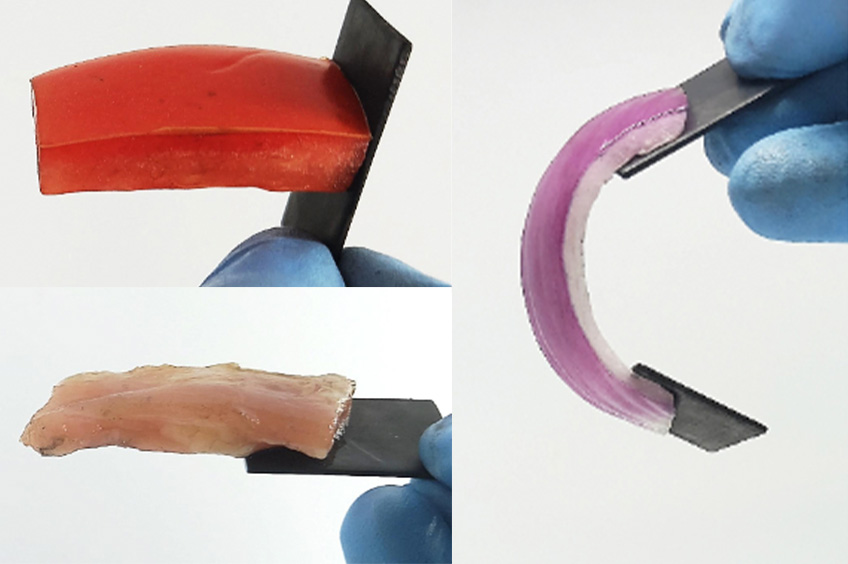News Story
Replace Glue with Electricity; Obtain the Same Results

An accidental discovery of an unconventional adhesion technique involving electrical currents has captured the attention of scientists around the world.
The discovery, made by students led by Srinivasa Raghavan, a professor in the Department of Chemical and Biomolecular Engineering, revealed a method for adhering hard and soft materials by applying electricity. Their work was published in the American Chemical Society’s (ACS) Central Science journal.
By sending a direct current of approximately 5 Volts via a battery to a graphite or metal plate in contact with a soft gel, researchers found that an adhesion between the pair was achieved within seconds. In the same way, detaching these materials was possible by reversing the direction of the current, which was done by flipping the positive and negative poles of the battery.
[Watch a demonstration on YouTube.]
The technique can be applied more broadly by replacing the soft gel with other materials, including tissues of animal origin (chicken, beef, pork, among others) or plant origin (fruits such as bananas, and vegetables like potatoes and onions)—which were all adhered to graphite or metal plates during the experimental process. The multifunctional and yet simplistic nature of this method raised questions among Raghavan’s team as to why this wasn’t discovered earlier.
“What’s remarkable here is that in principle, this experiment could have been done back when batteries were first invented, a hundred years ago, but for whatever reason, nobody found this,” said the professor.
Raghavan’s technique, named “Electroadhesion Between Hard and Soft Materials” builds from his team’s 2021 discovery of electrically induced adhesion between gels and animal tissues (both of which are soft materials). The earlier discovery led to a method for suture-free repair of cuts and wounds that won the University of Maryland’s Invention of the Year in Life Sciences the following year.
Overwhelmed by the endless possibilities, the professor proposes multiple uses for his method; for starters, robotic grippers could leverage this mechanism to grasp objects, eliminating design constraints, such as the need to mimic fingers. In soft robotics, there is also interest in attaching hard elements to soft elements, similar to how our body has both bones and muscles. But a more striking feature unveils what once seemed impossible: achieving adhesion underwater—which could change emergency responses in maritime disasters. He says that this discovery has led to unimaginable results.
“If anyone told you that a banana can become stuck to a spoon, you would think they’re crazy,” he said.
The paper garnered over 2,000 reads within one week of the publication date, a metric usually reached after one year of publication, and a total of over 12,000 reads since March.
In the News
-
A jolt of current has sticky results by American Chemical Society’s Chemical & Engineering News
-
Electro-adhesion Heralds New Implant and Robot Tech by Institute of Electrical and Electronics Engineers (IEE) Spectrum
-
You don't need glue to hold these materials together—just electricity by Phys.org
Published May 21, 2024









